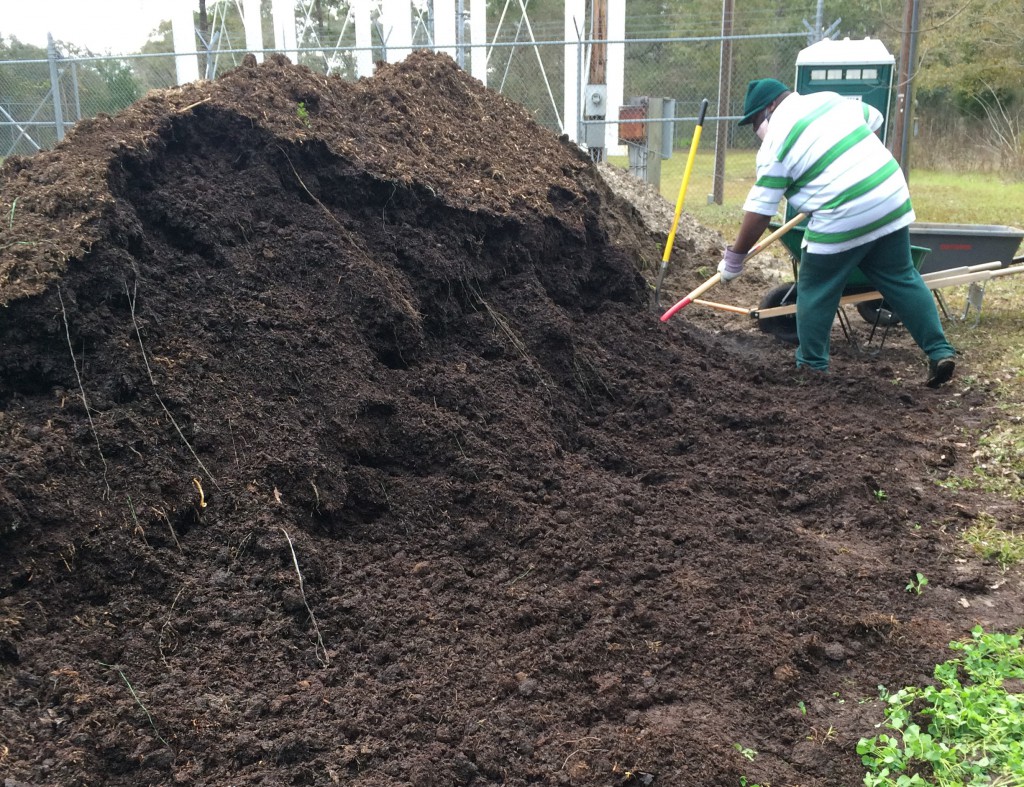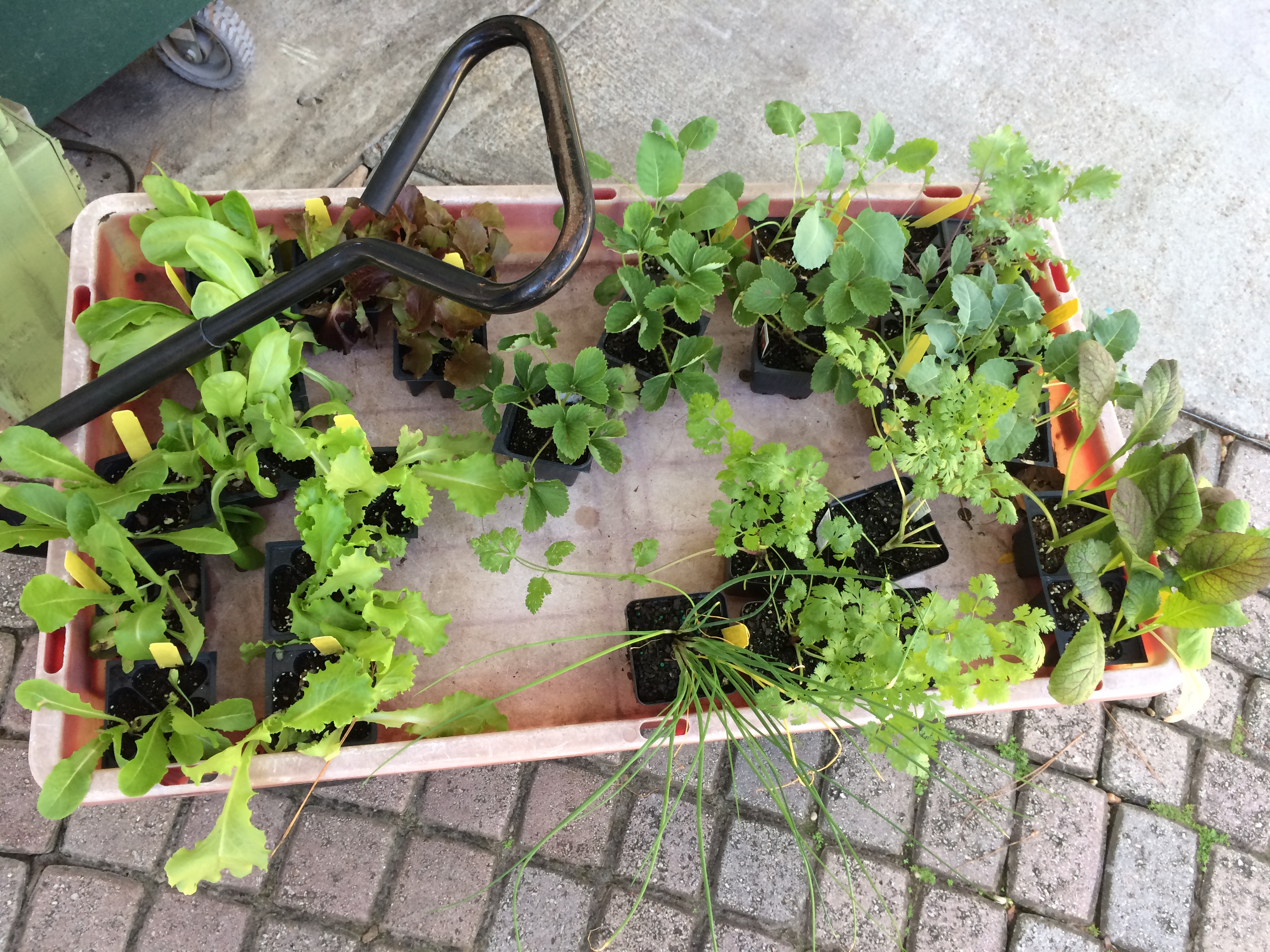
by Molly Jameson | Apr 27, 2016
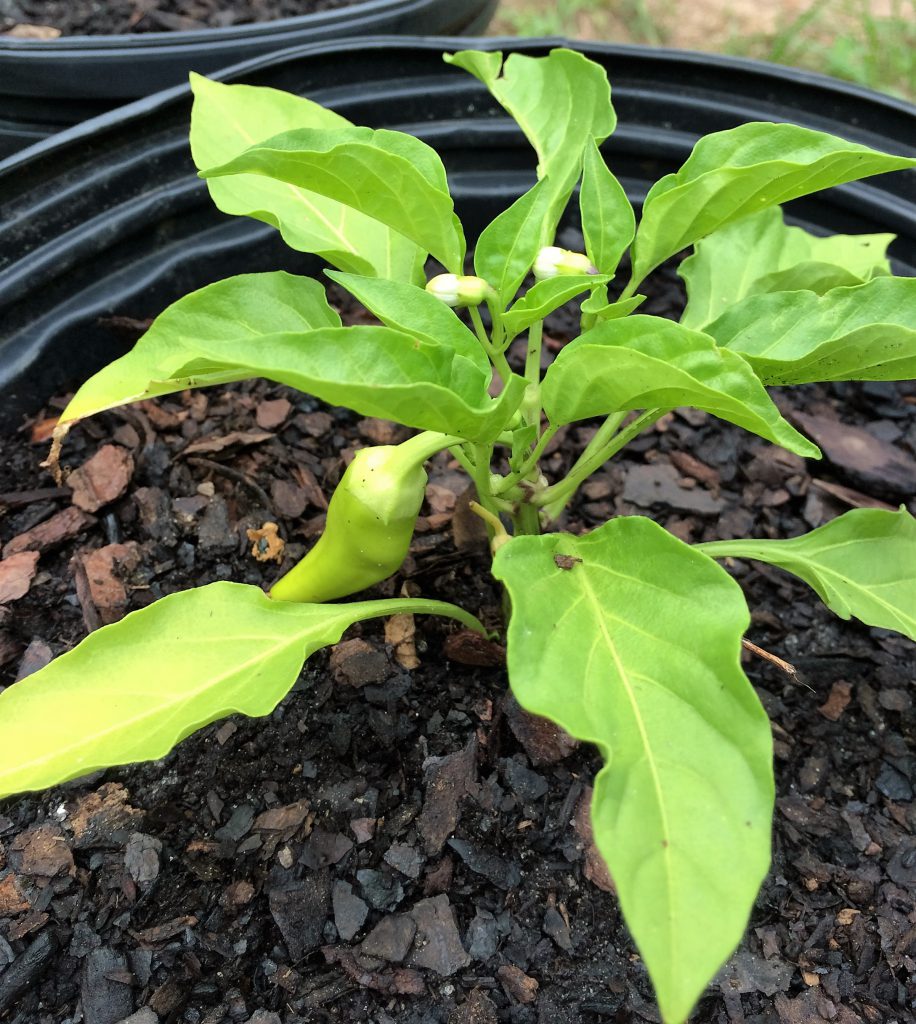
Banana pepper in container. Photo by Molly Jameson.
Interested in having a garden, but have limited space? Maybe you live in an apartment, have poor soil quality, or you just don’t have many areas that get enough sunlight. Maybe you’ve tried gardening, but given up, labeling yourself as one of those who “just doesn’t have a green thumb.” Well, I’m here to tell you, don’t give up! Try container gardening. Growing your own vegetables in containers is easy and can be a very rewarding experience. Container gardens also tend to have fewer weed, pest, and disease problems then regular in-ground gardens. Following just a few guidelines, you can have a bountiful harvest of fresh fruits, vegetables, and herbs right by your front (or back) door-step!
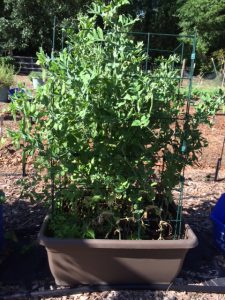
Grow vegetables easily in a large planter. Photo by Molly Jameson.
So, what are these guidelines, you ask? Well, you first want to choose the right container. This could be a large flowerpot, window box, planter, 5-gallon bucket, half-barrel, recycled material…the list can be endless. Just as long as your container is big enough and has proper drainage. Generally, the container should be at least 10 inches wide and 10 inches deep. The bigger the better, as it will give the roots more space to grow, and the soil will not dry out as fast. Tomatoes, for instance, do best in larger pots, preferably the size of a five-gallon bucket. For many herbs, you can get away with planting two or three different types in the same container. It is also important that your container has drainage holes, so water can escape and air can circulate. Use a one-fourth inch drill bit to create holes in the bottom or along the sides near the bottom of the container if it does not have holes.
Most of us know plants need both sunlight and soil. But just how much sunlight and what type of soil? If you are growing vegetables, it is best to have full sun – which means at least six hours of direct sunlight per day. An advantage of growing in containers is that you can easily place a container in an area of your yard or on a balcony that receives adequate sunlight, when it would be much more difficult to build a garden in these same areas.
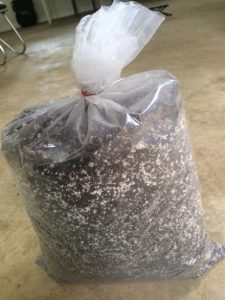
Buy potting soil in bulk to cut down on costs. Photo by Molly Jameson.
So what about soil? When growing in containers, you want to make sure you get potting soil that is made for containers. These mixes will contain materials such as peat, perlite, and vermiculite for both good drainage and moisture-holding capacity, and materials such as compost and nutrient amendments that will keep your plants healthy. You can simply ask your nursery specialist for a mix formulated to grow vegetables in large outdoor containers. If you are growing a lot of vegetables, you can cut down on costs by making your own mix. Just make sure you have a good balance of the aforementioned materials, and mix in a slow-release vegetable fertilizer, following directions on the label.
Now that you have your container, your soil, and a sunny location, it is time to get the plants. Some plants are best bought as transplants or grown from seed started indoors. Vegetables such as broccoli, collards, kale, tomatoes, eggplant, peppers, and strawberries fall into this category. Other plants, such as root crops, arugula, lettuce, spinach, mustards, beans, peas, cucumbers, squash, okra, cilantro, and basil can be started from seed directly into containers.
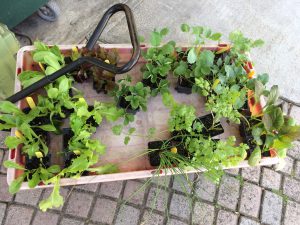
For some vegetables, buy transplants from your local nursery. Photo by Molly Jameson.
Okay, so you have all the materials. Now what? If you are growing from transplants, first thoroughly moisten the potting mix and the plant’s soil. “Transplant shock” is reduced when there is proper moisture. Set plants at about the same level they were growing in their original pot. For tomatoes, remove lower leaves and plant deeper in the container. If you are growing from seed, simply plant the seeds according to their label. A good rule of thumb is to plant the seed to a depth of about two to three times the seed’s diameter. If you are worried about your seeds not germinating, go ahead and plant more seeds than you need. But remember to thin to appropriate spacing if they do, indeed, all come up. Spacing will be specific to the type of vegetable.
After planting, water gently but thoroughly. Monitor your container garden, making sure the potting mix does not dry out. You can reduce evaporation by mulching with leaf litter, straw, or a similar material. Plants that grow tall or produce vines, such as tomatoes and cucumbers, will need support. A wire cage or pole, inserted into the container at planting time, will support the plant as it grows.
Last step is to call over all your friends and family and show off your beautiful vegetable plants! They will surely be impressed by your “green thumb” and will be eager to learn your gardening secrets.

by Molly Jameson | Mar 9, 2016
Please join UF/IFAS Leon County Agricultural and Horticultural Extension Agents as they present the:

The series will run from 6:00-8:00 PM on March 24 and March 31, 2016 at the Leon County Extension Office, located at 615 Paul Russell Road, Tallahassee, Florida 32301.
The two-day series will feature Extension Agents Mark Tancig, Molly Jameson, and Trevor Hylton as they discuss:
Garden site selection
Soil and fertilization
Spring planting and gardening techniques
Gardening in small spaces
Spring vegetable varieties
Common pests
Extension Demonstration Garden tour
Question and answer session
Light refreshments will be provided. Please wear closed-toe shoes on March 31, as we will tour the Leon County Extension Office Demonstration Garden, located on site.
The cost is $20 per person or $30 per couple, by cash or check at the door or by mail.
Please register by calling Genice at 850-606-5218.
For more information, contact Molly Jameson at mjameson@ufl.edu or by phone at 850-606-5219.
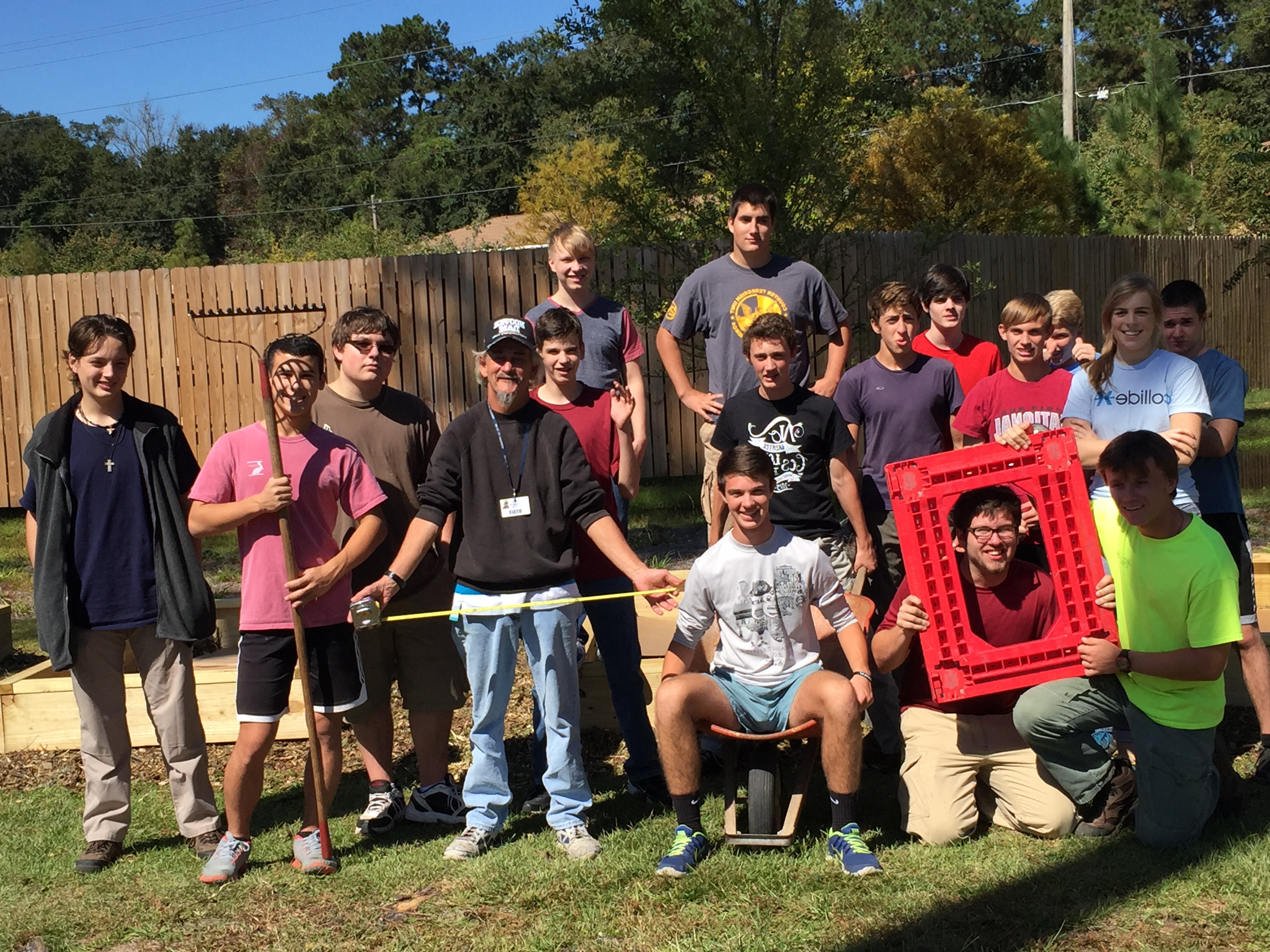
by Molly Jameson | Jan 13, 2016

Volunteers after lots of hard work mulching and adding compost to eight raised beds at The Shelter garden.
Have you ever been interested in volunteering at a school or community garden? Are you involved with a garden that could use some help? Well, UF/IFAS Leon County Extension recently started an Adopt-a-Garden program for volunteers to “adopt” a school or community garden for volunteer credit. Volunteers can teach hands-on gardening techniques, conduct educational talks and present displays at garden workdays, assist with garden planning and networking, encourage gardeners to work together, and help with any other activity that adds to the vitality of the garden. The program focuses on garden education and outreach as the primary objectives.
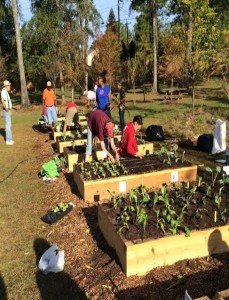
Volunteers hard at work planting fall vegetables in The Shelter garden.
The first major project of the Adopt-a-Garden program has been very exciting, with UF/IFAS Leon County Extension Master Gardeners “adopting” the new homeless shelter at the Kearney Center in Leon County. Master Gardeners lead the way in the organization and construction of eight raised bed vegetable gardens located on site directly behind The Shelter facility. They were awarded a community garden mini-grant from Leon County, which helped to cover garden supplies.
The Leon County Master Gardeners have received assistance from UF/IFAS Extension Agents, Florida State’s College of Social Work, and many other members of the community in gathering supplies and donations, recruiting volunteers, communicating with The Shelter staff, building and filling the raised beds, planting the garden, and maintaining the garden.
The gardening materials for The Shelter garden were generously supplied at no coast or at discounted costs by Lowe’s Home Improvement, Britt’s Dump Truck Services, Tallahassee Nurseries, Native Nurseries, Asplundh, and the FSU College of Social Work.
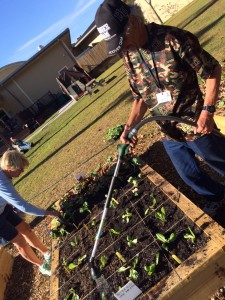
Shelter resident watering freshly planted lettuce.
Leon County Extension and Leon County’s Office of Resource Stewardship will conduct shelter resident and staff garden trainings to ensure the garden is maintained and successful going forward. Extension’s Family Nutrition Program is currently offering nutrition education classes to shelter residents as well.
This project will allow shelter residents to get hands-on experience working in a vegetable garden, learn about different vegetable varieties, and taste their harvest, as vegetables that are grown in the garden go directly to The Shelter kitchen for meal preparation. The garden was officially dedicated as the Wendy Crook Memorial Garden by Leon County Government, with the dedication event reported by local television station ABC 27 WTXL. The article and video clip can be viewed here.
Along with the Wendy Crook Memorial Garden, other school and community gardens have been “adopted” by volunteers. If you are in the Leon County area and are interested in becoming a volunteer with the Adopt-a-Garden program, you can find out more information at the Leon County Adopt-a-Garden website or contact Extension Agent Molly Jameson, at mjameson@ufl.edu. Volunteers are encouraged to team up on garden projects and all levels of gardening experience are welcome.
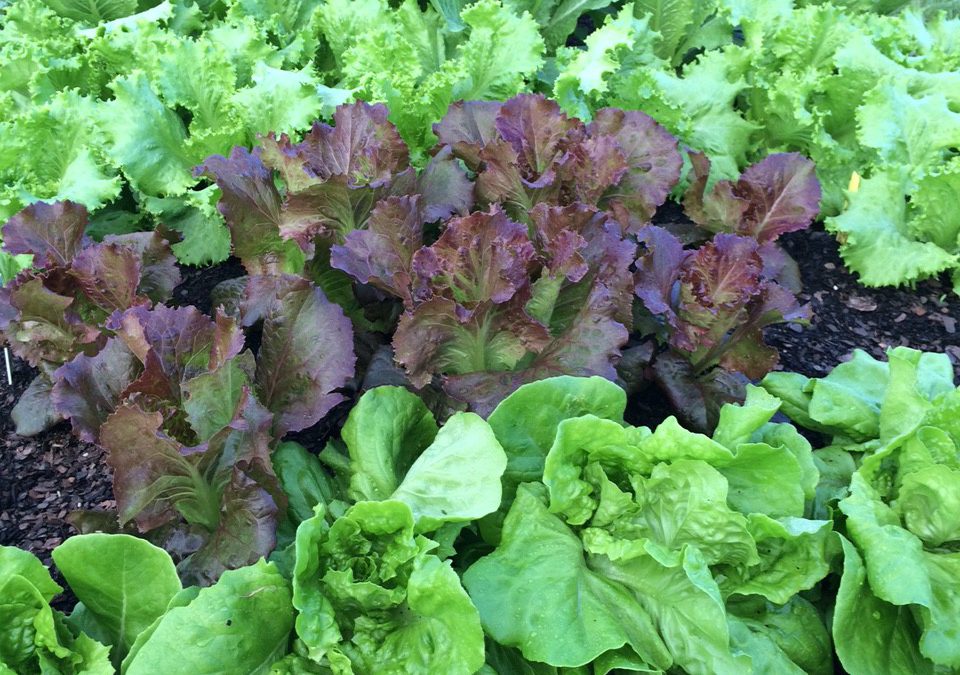
by Molly Jameson | Nov 24, 2015
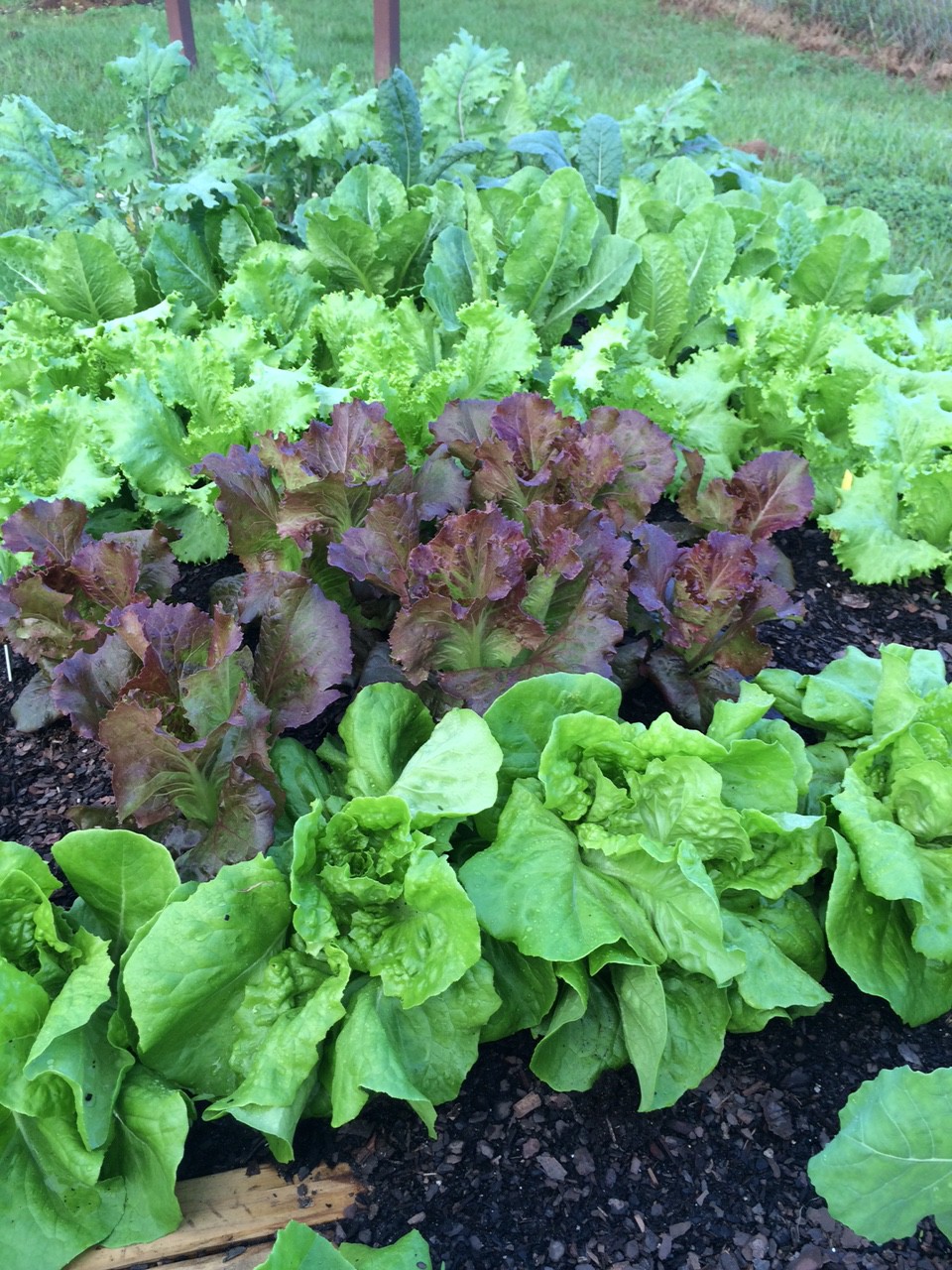
Kale, mustard, and lettuce in fall garden. Photo by Molly Jameson.
In North Florida, December can mark the peak in fall vegetable gardening. Early lettuce varieties are beginning to head and your later varieties are coming on strong. Radishes are starting to erupt out of the ground, and leafy greens are producing big beautiful leaves. But did you know that simple changes in how you harvest can greatly increase the longevity of your fall garden?
Here are a few harvesting tips for stretching out the fall harvest to ensure you will have plenty of greens all the way into spring:
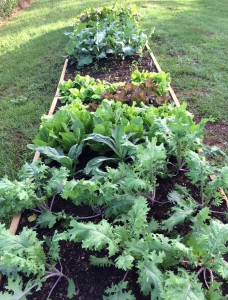
Plant radishes and arugula as gaps form in fall vegetable garden. Photo by Molly Jameson.
- Harvest leaves often: Leafy vegetables and herbs often produce more leaves the more you pick them. Harvest the lower, oldest leaves of vegetables such as leaf lettuce, kale, collards, and Swiss chard often. Be sure to maintain two to three leaves per plant; this method will ensure tender, pest-damage-free leaves, while encouraging the plant to keep producing.
- Thin to eat: Plants such as arugula and spinach are excellent vegetables to seed heavily and thin to eat. Once the plants have produced their first few true leaves, harvest the whole plant and use the leaves in salads. Continue this method until plants are about six inches apart, and then harvest leaves only. In this way, you will have salads filled with small tender leaves in the beginning of the season, and larger leaves for salads and cooking all the way into spring.
- Cut stems of florets high: Once your broccoli or cauliflower curds are ready to be harvested, cutting the stem high will often mean more secondary heads will form. Once your plants quit producing florets, start harvesting the leaves, which have great flavor and are highly nutritious. Also, with cauliflower, loosely tie the leaves around the curd. This forms a protective barrier from the sun and also improves color.

Assorted greens in fall vegetable garden. Photo by Molly Jameson.
- Harvest in the morning: Plant moisture and nutrient content are often highest in the morning. Once harvested, these leaves are less likely to wilt, and flavor will be preserved. Submerge or run cool water over the plants to maintain vigor. Alternatively, you can harvest in the evening if you plan to prepare the food that night.
- Fill in the gaps: Once you begin harvesting frequently, you will notice space begins to open up in your garden. It is often too early to plant cold-sensitive spring crops, yet you can continue to plant some quick growing fall vegetables, such as radishes and arugula. Sow these seeds as space opens up to maximize your food production until it is warm enough for the new season.
- Use materials to extend the season: By using frost cloth, low tunnels, cold frames, and shade cloth, you can protect your vegetables from early cold snaps and extend the season into spring. These materials, as well as wire and netting, can also protect your crop from deer, squirrels, and rabbits.







